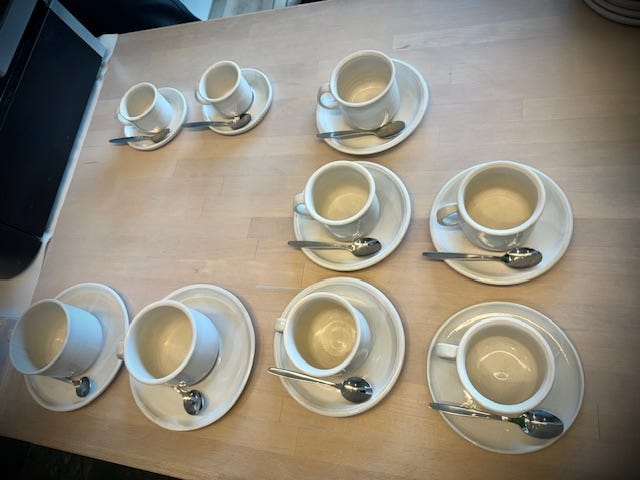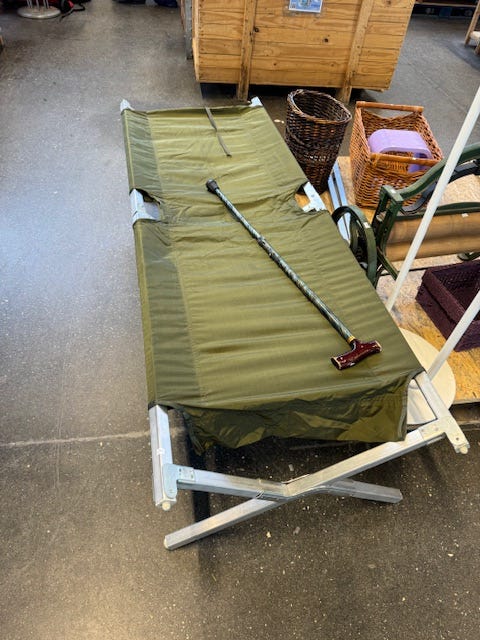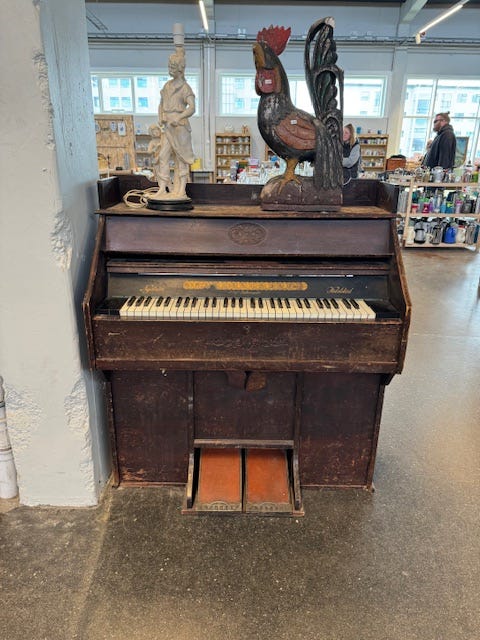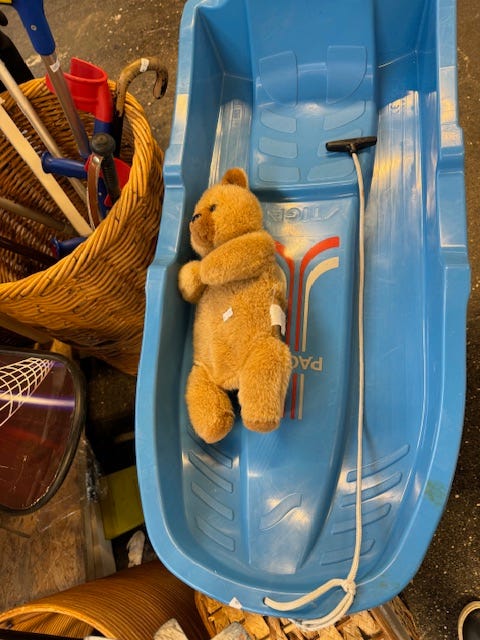“A man is indeed a city, and for the poet there are no ideas but in things.”
― William Carlos Williams, Paterson
A while back, Mende Smith asked if I’d thrifted in Iceland…
I love the use of thrift as a verb. Awesome! :)
I started thinking about the thrift stores of Iceland back then, and am doubling back, now….
I was traveling for weeks with only a single carryon, no extra space, so I didn’t buy much of anything, but I definitely wandered through thrift stores. When I type “stores,” my hands first type “stories,” and isn’t that about right? Thrift stores are full of stories. Instead of buying things, I took snapshots of collections of objects arranged as I found them, if the arrangement seemed evocative. I love what I consider 3-D found collage. Shit gets weird, when you put things side-by-side, right?
Maybe it’s just me, but I see Hemingway, right here:
Somebody put the objects together. I chose the shape of the frame, the photo, to turn my attention to these things…
By association, the combination—a cot, a cane, a few storage baskets—starts to build a visual, visible story. There’s a leap between the details. There’s a composition, spatially. Maybe it’s the story of a wounded soldier, with that army green cot, a cane…or maybe it’s about somebody else, broke and living with army surplus. A child, a hermit, a camper, foster care, a runaway, a park ranger, an old woman who lives alone in a beach-weathered shack, sleeping on this cot instead of a bed…the cot is for a single person. Who is this person, what happened and what will happen next? What’s the conflict? What do they want, and what do they have? Where did they get these, and why? What are the emotions? Who has this person been, how has he or she changed, how might they change again in the course of a story, a novel, a play?
Or what if there’s more than one person, and only this small bed-like thing? Do we have The Zoo Story, by Albee, two people fighting, or something more intimate? Or…both?
What do these things, in combination, tell us about the ongoing struggle of what it means to be human and alive, in a time and a place, with a set of urges and anxieties?
In Iceland, there was a beautiful afternoon when a friend and I walked toward what we thought was going to be a locally hip though also touristy flea market. Seemed cool! Ha!
We went in the wrong direction though, toward the wrong sale, and ended up in the Reykjavik equivalent of what we’d call the Bins, back in Portland.
The Bins are just one step above the landfill, most often. If you’re lucky, you get lucky. Materialism’s discards roll out of the back rooms in bulk, hauled out in massive carts by employees in gloves and masks. The river of things is poured out, and the crowd goes wild. I’ve been in the fray.
What I love most about the Bins isn’t the objects, but the lives, the people. There’s a whirlwind of languages and styles, Russian Orthodox families elbowing in alongside Portland Goth, and everybody else right there in the mix, too.
Who are these people (how complex
the mathematic) among whom I see myself
in the regularly ordered plateglass of
his thoughts, glimmering before shoes and bicycles?”
― William Carlos Williams, Paterson
The Bins are invariably both dirty and hopeful, jammed with dreams and history. It’s all objects, all the time. The biggest thrift store we found in Reykjavik was the same but with a local flair.
“Love your objects,” right?
But in these particular photos….
There’s a trick to the tone I’ve established, isn’t there.
On that particular day, I leaned toward taking photographs of very old things. I did that intentionally.
The overall impression created by the photos then becomes an implied assertion that everything I saw was so very old. It’s a visual commentary, as though thrift stores in Iceland are stuck in a simpler time—a time of cots and typewriters, which isn’t true, at all. It’s only part of the picture. It can be made to seem true by selecting particular objects and details over other objects and details. Right?
Writers choose their details.
For no reason beyond my own, I gravitated toward building a tone, a vibe, a time, a vision.
Some thoughts on how to use this impulse in our own work, with intention:









